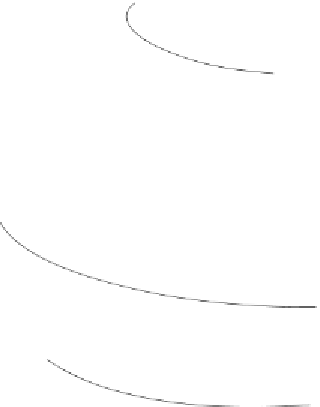Geoscience Reference
In-Depth Information
Subpolar
low
Polar high
Polar easterlies
60°
Polar front
30°
Hadley
cell
We sterlies
es
Hadley cell
Hadley cell
NE
trade winds
0°
s
Hadley
cell
SE
trade winds
fig. 7. Atmospheric circulation on planet Earth. The Sun's heat forces the air to
rise in the tropics, but it is deflected by the Earth's spin to form a clockwise
pattern in the northern hemisphere and an anticlockwise pattern in the south.
At mid and higher latitudes are further circulation cells, caused by cold polar air
spreading south and intersecting with warmer air from the south.
levels of the ocean or even to the sea floor, and if such sinking is sus-
tained it can generate a continuous current of water deep within the
ocean. Such thermohaline currents formed in hot, drying conditions
dominated the Earth's oceanic circulation system at some times in its
history, as we will see.
However, over the last 30 million years or so an additional means of
generating an ocean current has dominated the world's ocean cur-
rents. The Earth's global climate since that time has been in an 'ice-
house' state, with major ice sheets around one or both of the world's









































































































Search WWH ::

Custom Search